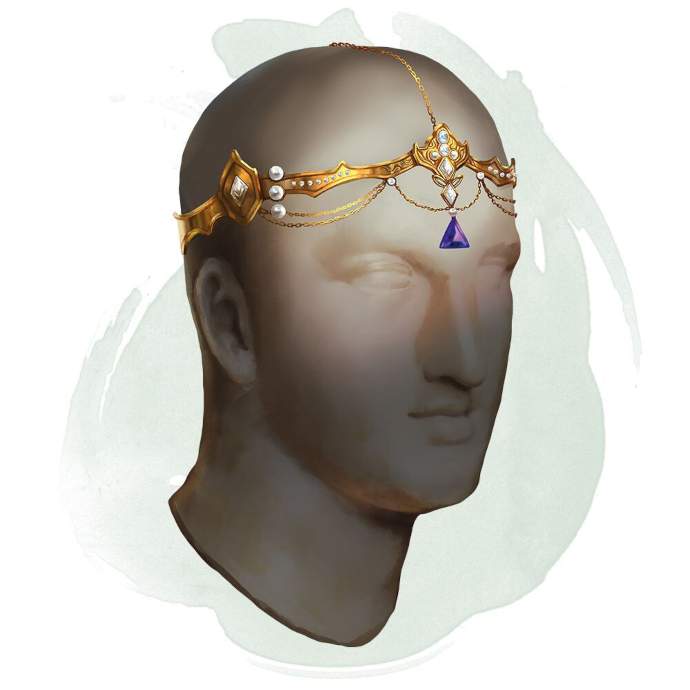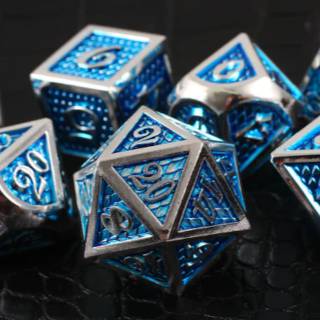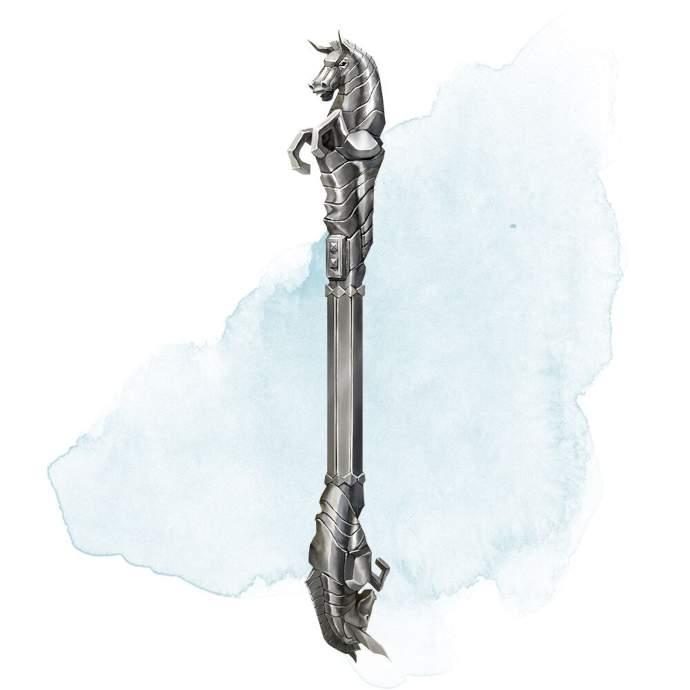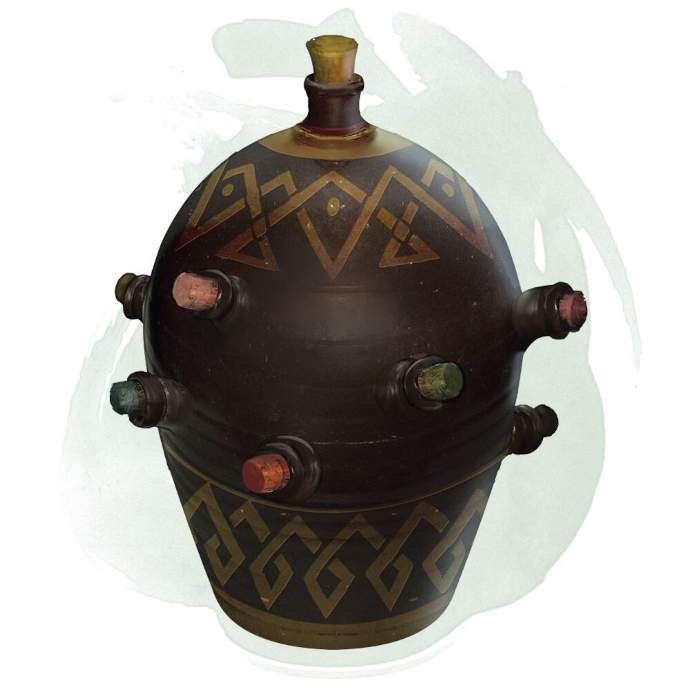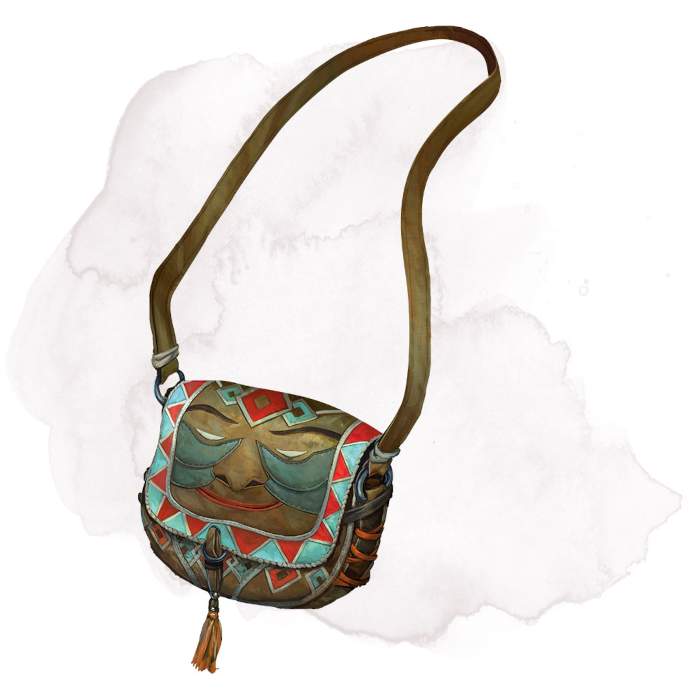No matter how high a Barbarian’s strength, no matter how dexterous a Rogue might be, no matter how many spells a Wizard knows, they’re toast if they don’t have magic weapons and armor—or, at the very least, completely ineffective against whatever the Dungeon Master brings. But while magic weapons and armor have an important role to play in D&D, they’re not always the items that players fondly remember. As important as they are to gameplay balance, they aren’t what players will talk about when the final scene of the campaign comes to a close. What’s truly memorable are the weird magic items that DMs hand out—the ones that have really cool, really funny, or really unpredictable effects that give rise to emergent play and spark incredible stories. Here are some of my favorite magic items to give to players that aren’t just standard +X swords. These won’t just change things up—they might lead to some of the best moments in your campaign.
1. Headband of Message
There’s always one player who likes to wander off on their own—usually the Rogue or Ranger. With high dexterity and proficiency in skills like Stealth, they’re the perfect scouts for slipping ahead and finding out what the enemy has planned. The problem is, once they’re out there on their own, they have to come back to the party to report their findings. If they’re caught on the way back, all their hard work is ruined in the process. With a Headband of Message, players won’t have to worry about sneaking back to the party. This uncommon magic item allows its user to cast the Message cantrip at will, meaning they can communicate with their comrades up to a distance of 120 feet. Because of the cantrip’s low level, you can give it out to characters by third level without worrying about breaking game balance, and it’ll open up all kinds of roleplay and strategic possibilities—especially for stealthy characters, who can set up ambushes and communicate tactics. Sure, it might make some encounters easier, but the trade-off is worth it for how much more engaged your players will be. For an extra wrinkle, you might even have the Headband of Message linked to another Headband of Message, facilitating constant two-way communication between two characters. It’ll make your party’s Rogue feel like a secret agent doing secret agent-y stuff!
2. Immovable Rod
The humble Immovable Rod has been a part of D&D for generations now, but it often gets overlooked by players in favor of bigger and flashier magic items. It’s a shame because the Immovable Rod almost always brings out the creative sides in players. Indeed, it takes a special mind to come up with ways to use an Immovable Rod in combat—and depending on how creative your players can get, the resulting scenes will be absolutely unforgettable. The Immovable Rod is incredibly simple to use. With the push of a button, its user can lock the rod in place. Once it’s activated, it won’t move. Whether it’s pressed against a door or hanging in mid-air, it will stay in place—only movable through a DC 30 Strength check. That means an Immovable Rod can be used to bar doors, trip up powerful foes, or even pin down a dragon if it’s positioned in the right way. It can even stop a player from falling to their death if activated mid-fall, so having one in their inventory won’t go amiss for the party.
3. Alchemy Jug
Every party has a player who’s always thinking outside the box. For those players who want to be creative, particularly in combat, I recommend the always-inspiring Alchemy Jug. This unusual-looking jug looks like it can contain up to a gallon of liquid, but its user can spend 1 Action to name any liquid and it will start producing that substance from one of its many spouts. There’s a limit to how much of each liquid the Alchemy Jug can produce in a given day, but your imagination is the limit when it comes to what substances it can produce—water, wine, honey, poison, acid, or even mayonnaise. (Yes, the Alchemy Jug can make two gallons of mayo in case the party is stuck with extra-dry sandwiches.) In the hands of an extra creative player, one simple Alchemy Jug can be a powerful weapon that’ll turn any fight in the party’s favor, all while resulting in some of the coolest and funniest encounters.
4. Bag of Holding
It might seem obvious, but no party should travel far distances without a Bag of Holding to hold their stuff. No one plays D&D to engage in complex inventory management, so this uncommon item solves a lot of logistical problems for any group. The Bag of Holding can hold up to 500 pounds of equipment, items, and treasure as long as the contents don’t exceed 64 cubic feet of volume (and each item must fit into the mouth of the bag). This allows plenty of storage for items, especially anything found during a dungeon crawl, without subjecting the party to encumbrance rules. The Bag of Holding is a mainstay in most parties, but it can do so much more than just carry the party’s stuff. For example, if the party has a Handy Haversack or a Portable Hole as well, those items can be put into the Bag of Holding to create a gate to the Astral Plane. When used at the right moment, this can instantly transport any creature within ten feet of the gate to a random location in the Astral Plane. Facing an unbeatable opponent or stuck in a desperate situation? This creative strategy can help the party come out on top. Read next: The best map-making tools for DMs

